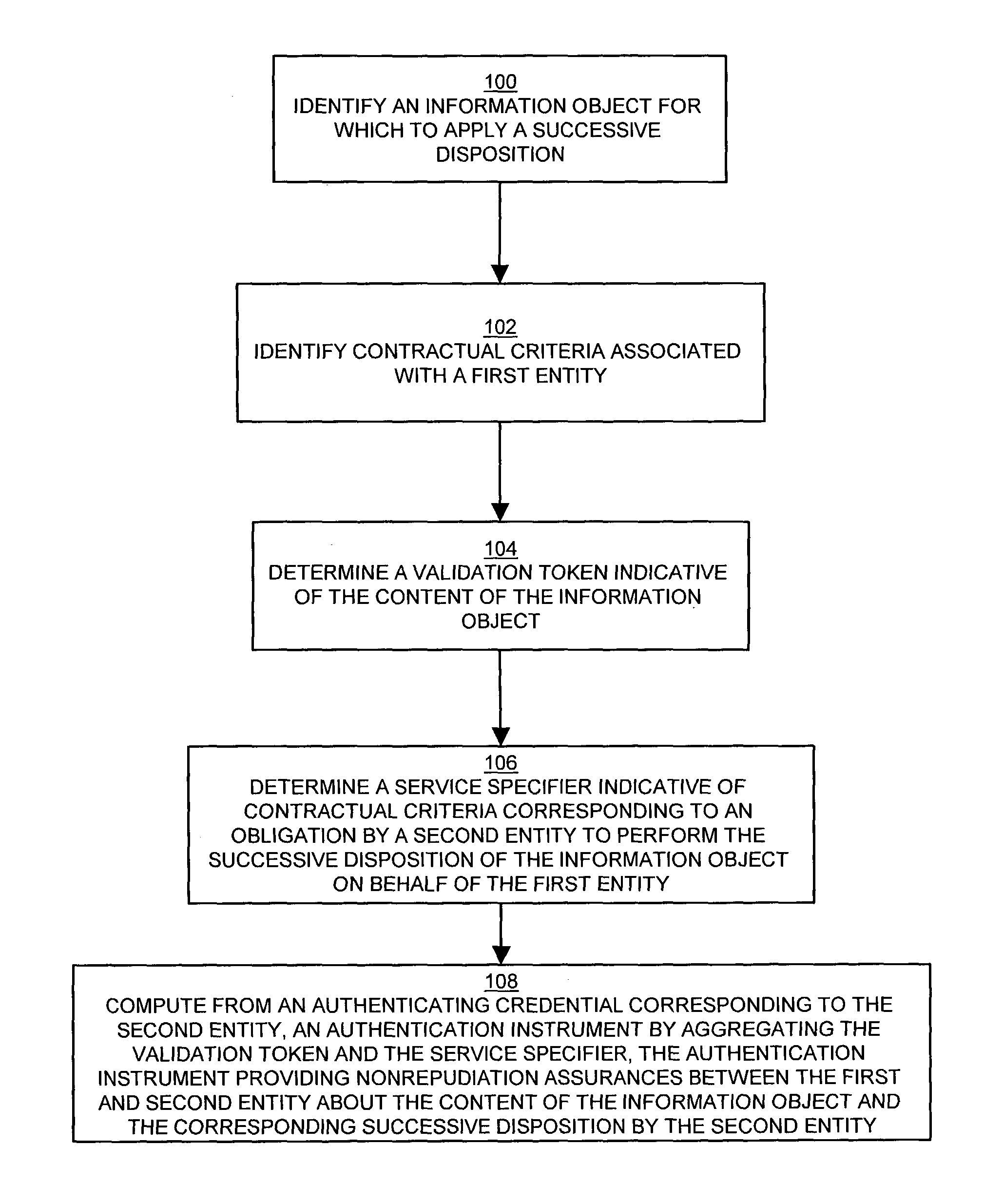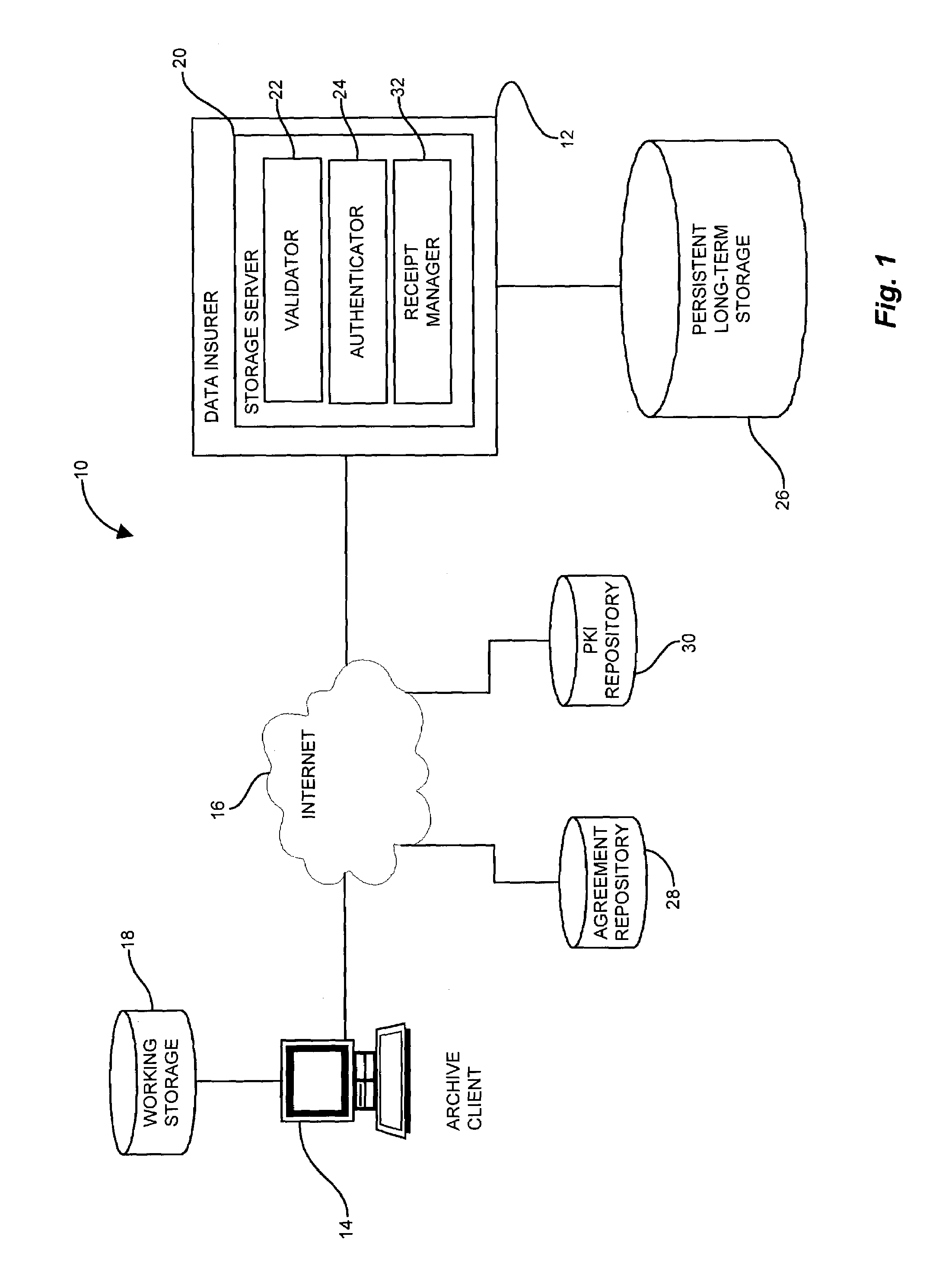Reliable embedded file content addressing
a technology of embedded file content and addressing, which is applied in the field of reliable embedded file content, can solve the problems of insufficient granularity of archival data, insufficient parameters or penalties of sla, and the variety of deficiencies of the system to which it is related
- Summary
- Abstract
- Description
- Claims
- Application Information
AI Technical Summary
Benefits of technology
Problems solved by technology
Method used
Image
Examples
Embodiment Construction
[0025]The present invention provides techniques and mechanisms for file archiving, identification, and recourse by generating an authenticated receipt of files transferred for storage in the form of an authentication instrument that is verifiable against both the data stored and the agreement binding the archive client (user) and the archive provider. The authentication instrument provides nonrepudiation assurances about the content of the file and the contractual terms under which the file was stored via an authenticating signature of the user which associates the file content with the contractual terms. The nonrepudiation assurances allow verification of the content of the archived file through a checksum or hash, and the authenticated receipt further indicates the terms of the contractual agreement for recourse by the user in the event of loss or other disposition of the file as defined by the contractual terms. In this manner, a user selects a file for insured storage along with...
PUM
 Login to View More
Login to View More Abstract
Description
Claims
Application Information
 Login to View More
Login to View More - R&D
- Intellectual Property
- Life Sciences
- Materials
- Tech Scout
- Unparalleled Data Quality
- Higher Quality Content
- 60% Fewer Hallucinations
Browse by: Latest US Patents, China's latest patents, Technical Efficacy Thesaurus, Application Domain, Technology Topic, Popular Technical Reports.
© 2025 PatSnap. All rights reserved.Legal|Privacy policy|Modern Slavery Act Transparency Statement|Sitemap|About US| Contact US: help@patsnap.com



